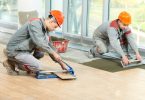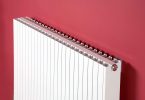If you own an old house with exposed wood beams or pillars, then chances are the timber is not looking at its best anymore. In such situations, you will need to restore the timber; here’s how.
How to deal with damp
Damp is the primary cause of decay in timber. This can lead to further problems, such as timber rot or beetle infestation (or even a combination of the two). Such issues can be pretty disastrous in structural timber, so it’s important to learn how to investigate and resolve decay problems.
The cause of damp in timber can be as simple as a blocked gutter or a leaking pipe, or even just being in contact with a damp surface. Fixing the cause of any damp issues and completely drying out the timber will limit any further rot or insect damage.
The beetles
Beetles (the non-musical variety) love to infest homes with timber beams and pillars, and pretty much any house built using timber will have been affected by beetles at some point. Also known as woodworm, these pesky little insects leave behind a fine dust as they munch their way through your timber.
Chemicals that are randomly sprayed do not tend to resolve the cause of beetle infestation, but rather they just simply deal with the symptoms. A better bet is to use a localised and specifically targeted application of insecticide on the affected areas.
By the way, any pre-existing holes in the timber are likely to be historic, so just concentrate on any “fresh” areas.
Checking the condition of the timber
The easiest way to check the condition of the timber is by simply prodding it with a penknife. By doing so, you will be able to determine whether the timber is sound or not due to the resistance of the blade. Alternatively, you may wish to invoke the services of a structural engineer if you are in any doubt as the condition of the timber.
Restoring exterior timber
Exterior oak beams are traditionally finished with a coat of whitewash. This is a breathable and traditional paint, although silicate paints can also be used. Some people think that, after any repair work, timber should be stained so that it matches a similar colour to existing stained timber.
The problem with staining oak, for example is that the stain will get darker over time, so it is probably a good idea to avoid using wood stain if possible.
Restoring interior timber
It is best to avoid using linseed oil when restoring interior timber, as it stays tacky and is a good dust and dirt attractor. Beams don’t usually need timber treatment, but you could always use some beeswax polish if you need to (you can also use this on floorboards too).
If you need to make some beams lighter in appearance, opt for some proprietary liming wax, or a casein-based paint for an opaque finish.
Replacing timber
Sometimes you might not have any choice but to replace sections of timber in your home. If this is the case, then you should research some local timber merchants that can supply the right type of oak or timber for your home.







